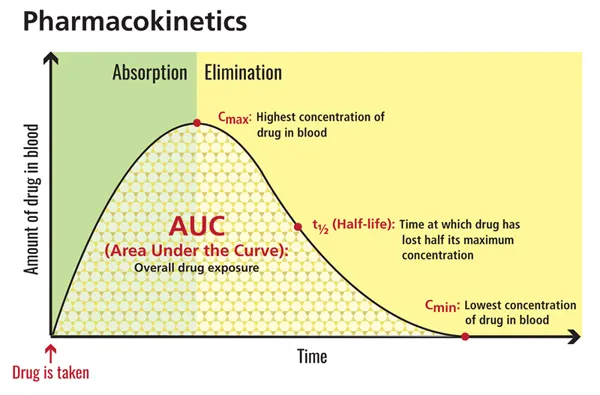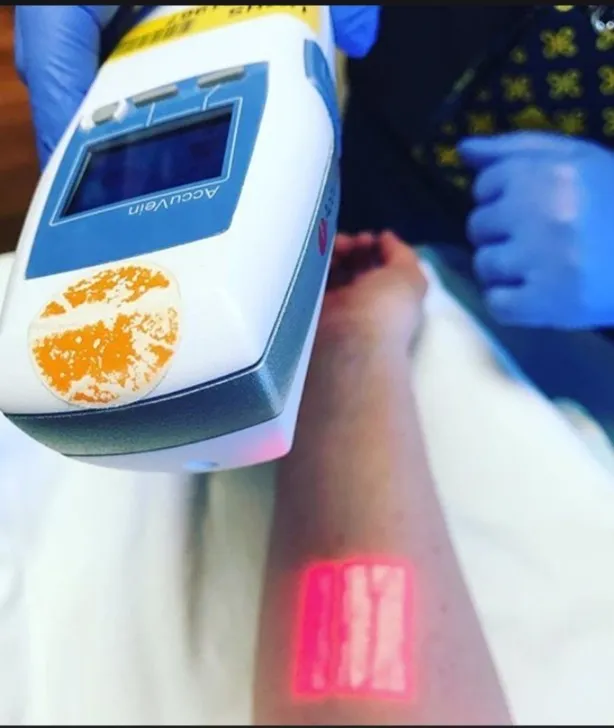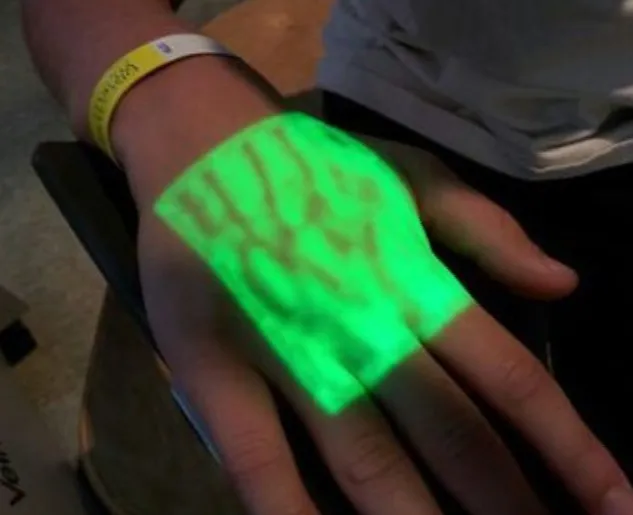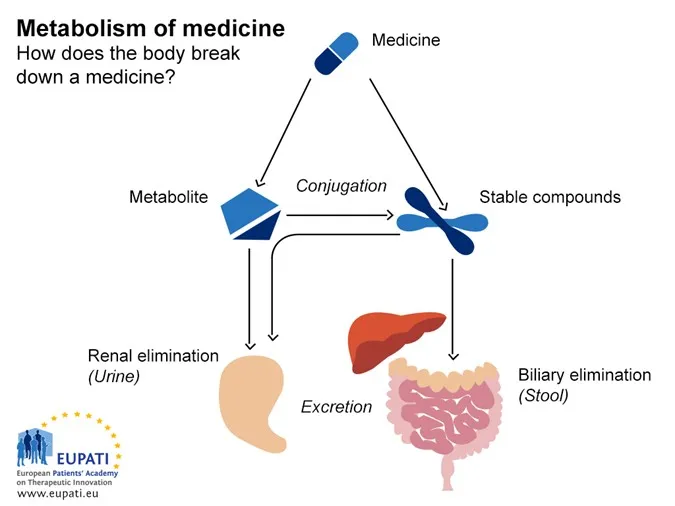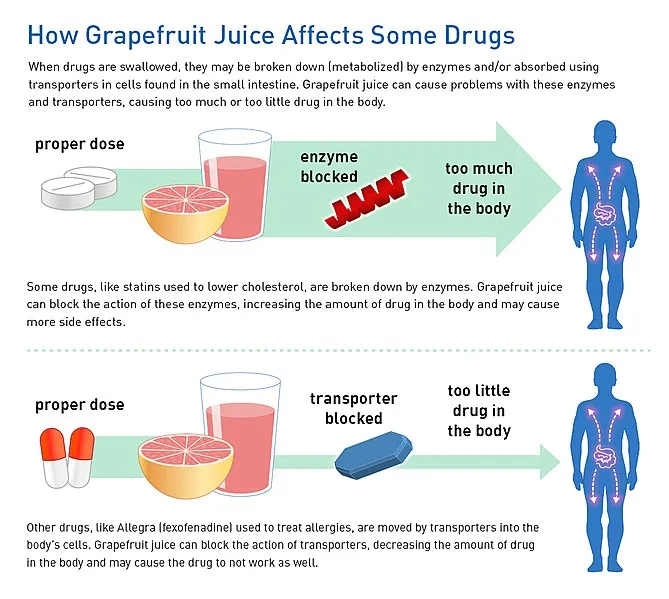Have you ever taken some time to ask yourself some critical questions about the drugs you ingest, what really happens in the body system after they are ingested. If you are as inquisitive as I am, you would be tempted to ask questions like:
How do drugs we take go through the body? What processes are involved each time we take some medications? How are they absorbed? How are they transported across the entire body system to effect their therapeutic actions? How do they get broken down? and finally How do they get excreted out of the body system, is it through urine or through faeces? Get a chair, sit and relax while I take you through the concept known as pharmacokinetics
Just for us to be on the same page, a drug or medication is any substance intended to bring about a restorative effect to a compromised or diseased biological system. They exert their effect by binding to specific receptors in the system while some do not necessarily require receptors. You can read this article for full understanding of how drugs work and exert their effects.
Our focus is more on the overall processess involved in drug circulation through the body system up-to excretion. You don't need to read those big, scary and complicated textbooks any longer to understand what pharmacokinetics is all about, I will simplify the concept as much as possible and probably introduce you to some new concepts and advances so far.
What pharmacokinetics is all about
The word pharmacokinetics in its simplest definition simply means how the body system handles drugs and medication we ingest. It is the movement of drug into, through and out of the body. It is process that must occur once a drug is taken. Now, there are four basic pivotal points on which pharmacokinetics stand on and they include: •Absorption •Distribution •Metabolism and •Excretion
You cannot talk about pharmacokinetics without discussing those pillars above. They are usually remembered with the mnemonics ADME. It is very important you know this, "every drug pharmacokinetics determines the onset, duration and the intensity or degree of the drug actions".
It is through the pharmacokinetic properties or profile of a drug that prescriptions and dosage are given. The duration of drugs in the body varies from one individual to another due to genetic factors and physiological states. For example, infants and older people tend to metabolise drugs slower than young and middle aged individuals. This and more you will find in the article I recommended earlier. lets now discus each pivot in detail, shall we?
Administration and absorption of drugs work hand in hand. Before drugs are absorbed, they obviously must be first administered after which they are liberated before absorbtion. It is also important for you to know that the pharmacokinetic properties of a drug are affected by the dose and route of administration, this ultimately affect the absorption rate of the drug.
Long before now, one of the major challenges faced by health care practioners is the collection of blood samples and administration of drugs especially through parenteral routes (other routes of drug administration aside apart from oral and anal routes e.g injections). This challenge is usually experienced with kids or individuals with very tiny veins and blood vessels.
The recent development of probes and infrared vein finders that uses a near infrared light-emitting diodes (NIR-LED) to see superficial veins have made it so easy that health care workers no longer have to go through the tedious process of finding appropriate veins in children and people with tiny veins for intravenous injections or venepunctures (blood collection through to vein).
Factors like variation in skin tone especially in babies, obesity and patients that are dehydrated have been the major problem hindering the ease of locating the right vein for either blood sample collection or administration of drugs through intravenous injection. The technology uses a harmless infrared light to detect veins in the skin and it takes advantage of the light absorbing property of haemoglobin molecule (the red colouring pigment of the blood) which in turn makes the veins visible by forming an image on the skin, this consequently allows the health care worker to see and select appropriate vein of choice.
As usual, technological advancement in medicine is aimed at making procedures less painful and less invasive. With the vein finders, a tourniquet need not to be tied on your arm, neither will you be tapped in a bit to located the right vein for drug administration or blood sample collection. Now back to our main discussion on absorption, after the drug must have been administered, it is liberated and the passes into the blood stream.
The rate of absorption of the drug is dependent on some factors such as the state of the stomach and intestinal wall (where absorption truly occur), the route of administration ( parenteral and enteral routes). The enteral routes are those that primarily go through the mouth while those of the parenteral are basically injections (intramuscular, intravenous and intrathecal -given through artery).
Those that go directly into the blood to exert their therapeutic action are the drugs given intravenously (intravenous injections) and they are the fastest route of drug administration while others that go through the gastrointestinal tract (GIT) are quite slow because the drug will have to be dissolved first in the stomach before liberation.
Some go through the surface of the skin (when applied topically) and enter the blood. Those given through the rectum, urethra, vagina and they are generally referred to as suppositories, a typical example is anusol (inserted into the anus) used for treatment of haemorrhoid).
The picture above summarises the different method of drug administration. Drugs can as well be given sublingually (under the tongue). Drugs administered through IV injections have the highest bioavailability, BV - 100% (the measure of the fraction of administered drug dosage that enters or gets to the systemic circulation in an unchanged form. It is a measure of the rate and the extent of absorption of a drug ).
Reason why drugs administered IV have highest BV is because they do not undergo first by- mechanism in the liver, or small intestinal wall. Usually, a pictorial graph is used to explain the basic parameters under pharmacokinetics and with more emphasis on Area Under the Curve, AUC and Half life, t1/2.
The AUC is also the bioavailability of the drug dose after administration. It is a measure of the quantity of the drug that reaches an individual's blood system within a given period of time after a specific dose of a drug is given. The information gotten from the AUC helps in determining dosage of a drug to be given and also for finding out any possible drug interactions. The half on the other hand is the time taken for a drug to reach half of its concentration after administration. These two major parameters play a very important role in drug prescription and formulation.
I would still reccommend you to read the article I earlier emphasised on at the early beginning of this topic, it will give you an understanding of what first by-pass mechanism means. Always bear in mind, absorption is the transfer of drug from its site of administration and also, the only route of drug administration that does not involve absorption is the intravenous route, this is so because the drug goes directly into the blood. Also take note of this, Drugs that are acidic in nature are mostly absorbed faster in the stomach whereas basic drugs are absorbed faster in the small intestine. So after absorption, what next?
After the absorbtion of a drug, it must then be transported to its predilection site i.e tissues and organs in the body. Distribution of a drug is simply the movement of the drug from the circulatory system to organs and tissues. This transportation is facilitated by several mechanisms and transport system which are also dependent on several factors for efficiency.
Distribution mechanism ensures that the drug is adequately dispersed. The distribution of a drug is dependent on its lipid solubility, its ionization at the physiological pH (degree of alkalinity or acidity) of about 7.4, the extent to which it can bind to plasma and tissue proteins.
Note this, the more lipophilic (lipid soluble) a drug is, the more it is the distributed into organs and tissues because they are soluble in lipid and thus, they can cross the bilipid layer of cell membranes of tissues and organs. On the other hand, Hydrophilic drugs usually are concentrated in cells, this is referred to as ion trapping. Tissues with higher blood flow to them receive more of the drug. What this simply means is that cardiac output also has a role to play in drug distribution.
Role of plasma proteins
Plasma proteins are very important in drug distribution because they help in the transportation of drugs by binding to them and they are the major determing factor of how long a drug will last in the body. Those drugs that bound firmly to plasma proteins last very long because the bound fractions are not easily or readily available for metabolism. Acidic drugs bind very firmly with plasma protein - Albumin while basic drugs bind with alpha 1-glycoprotein, also a very important plasma binding protein that binds to drugs to enhance their transportation and distribution.
The major binding protein is the albumin. Its main function is to regulate Osmotic pressure (the minimum pressure that must be applied to a solution so as to block the inflow of its pure solvent across a semi permeable membrane - something that selectively allows some molecules to pass through and at the same time prevents others).
Why pitin edema occurs most times in pregnancy
Swelling of the feet and faces during pregnancy is caused by increase fluid retention due to increase metabolic demand and also when there is a reduction in the level of albumin or other major proteins that play key role in maintaining oncotic pressure or oncotic pressure, edema (accumulation of fluids in tissues of the body leading to swelling) sets in.
One of the reason why most pregnant women have swollen legs and faces is as a result of reduction in plasma proteins which is caused by protein continuous absorption by the developing foetus in the womb and consequently this results to low level of plasma protein in the pregnant woman. Malnutrition also causes a reduction in protein level. The pitin edema is physiologic and resolves after pregnancy. Hope this meets you well, let's continue!
Volume of distribution, Vd
Another very important concept under drug distribution is volume of distribution, Vd. Volume of distribution is apparent and it is the pharmacological, theoretical volume that the total amount of administered drug would have to provide the same concentration as it is in blood plasma.
For example, If the amount of drug (X) and resultant concentration (C) are known, then it is easy to get the volume of distribution (Vd) using the equation X =VdC, where X = amount of drug in body, Vd = volume of distribution, and C = concentration in the plasma
The physiologic limitations
There are regions of the body that have barriers that prevent certain molecules from crossing , a typical example is the blood brain barrier and the placental barriers. The placental barrier on its on its own only allows the passage of drugs that are lipid soluble while the BBB in the brain only allows the passage of drugs that are not lipid soluble into the CSF (cerebrospinal fluid).
These are some of the natural barriers to the distribution of drugs to some regions of the body. So that's all about distribution,next is the hallmark of it all - metabolism of the drugs. Due to advancement in science, technology and in medicine, Some of this limitations can be by-passed because brain implants that are capable of dispensing drugs in the brain have been produced, for more of this technology, read this article. You have a lot to learn there.
Without the metabolism or breakdown of drugs, they can pose serious health challenge to to any biological system. The major organ responsible for the metabolism of drugs is the liver. The liver is the largest internal organ in the human body, it us to heat generation center of the body as it is endowed with a whole lot of digestive and has catabolic enzymes that play crucial role in drug metabolism.
You can as well refer metabolism as biotransformation, a process of converting a xenobiotic to either an active or harmless substance as the case maybe. For a full understanding of what biotransformation is all about, you might as well want to read this beautiful article I crafted out for you. We will dwell more on inhibitory actions of some substance on metabolism. This is going to be interesting, I assure you. Lets continue, shall we!
The sole aim of metabolism is to convert non polar compounds to polar compounds so that they are easily excreted out of the body system. At time the brwak down of this drugs could be blocked by other substances. A typical example is that fruit grape. It has been established that grape fruits have the ability of blocking or inhibiting enzymes and transporters that play crucial role in metabolism of drugs.
We won't go into much detail about how grape fruit carryout its inhibitory function on drugs since the article is anchored on pharmacokinetics. But just bear in mind that grape fruit consumption can be detrimental to your health when taken after some drug administration, e.g , you are not meant to take grape fruit after or before taking malaria drugs.
Are all inhibitions evil?
Without wasting much time, the answer is an emphatic no! Not all inhibitions are bad. Some are necessary to bring about the efficacy and effectiveness of another drug. A typical example is the pharmacokinetic enhancers. When they are given together with other drugs, what they do is to inhibit the metabolism of the other drug so as to keep them active at higher concentration and prolong their action in the body. They are usually included in some HIV treatment. Now we will shortly talk about the final stage of pharmacokinetics.
Excretion is simply the removal of the by-products of metabolism. These by-products could be toxic if not excreted and the major excretory routes are through the kidney (urine formation) and through billiary excretion. Others include through the breast milk and through sweats and saliva.
We will end the discussion here and continue with the kinetics of drug excretion next time.
Always remember, pharmacokinetics simply means how our body absorb, distribute, metabolise and excrete drugs. Avoid grapes when taking medications.
Until next time...la la
References
•Vein visualization: patient characteristic factors and efficacy of a new infrared vein finder technology •Vein Pattern Locating Technology for Cannulation: A Review of the Low-Cost Vein Finder Prototypes Utilizing near Infrared (NIR) Light to Improve Peripheral Subcutaneous Vein Selection for Phlebotomy •overview of pharmacokinetics •IISM-products •accuvein products •pharmacokinetic enhancers •The pharmacokinetics of drugs •principles of pharmacokinetics •Biopharmaceutics and pharmacokinetics •swelling during pregnancy •blood proteins •clinical pharmacology -clinical pharmacokinetics
Return from Exhaustive insight into the concept of pharmacokinetics - How your body deal with drugs to cyprianj's Web3 Blog


